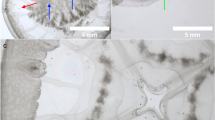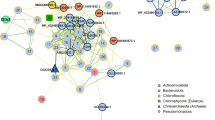Abstract
Gill diseases are common, especially in intensively reared fish; they result in respiratory distress, as well as impaired osmoregulation and excretion (1). Bacteria and parasites are common causes of gill disease, as is poor water quality, including planktonic blooms. Swarms or blooms of jellyfish are increasingly and especially problematical (2), and can result in high mortality of farmed fish. Small species of jellyfish such as Philalella quadrata (13 mm diameter) are capable of passing through the mesh of sea-cages and of being sucked into the mouth of fish during respiration. Here we show that the initial damage to gills of farmed Atlantic salmon, likely produced by nematocyst-derived toxins from the jellyfish, was compounded by secondary bacterial infection with Tenacibaculum maritimum. We also demonstrate that these filamentous bacteria were present on the mouth of the jellyfish and that their DNA sequences were almost identical to those of bacteria present on the salmon gills. This suggests that the bacterial lesions were not the result of an opportunistic infection of damaged tissue as previously thought. Instead, P. quadrata is probably acting as a vector for this particular bacterial pathogen, and it is the first time that evidence to support such a link has been presented. We could find no prior literature describing the presence of bacteria associated with jellyfish, other than some studies about their decay. We do not know if all jellyfish of this and other species carry similar bacteria in a symbiotic relationship, nor do we know their source, the role that they play under other circumstances, or indeed whether the jellyfish were themselves diseased. The high proteolytic capabilities of T. maritimum mean that partially digested gill tissues were readily available to the jellyfish, which rely heavily on intracellular digestion for their nutrition.



